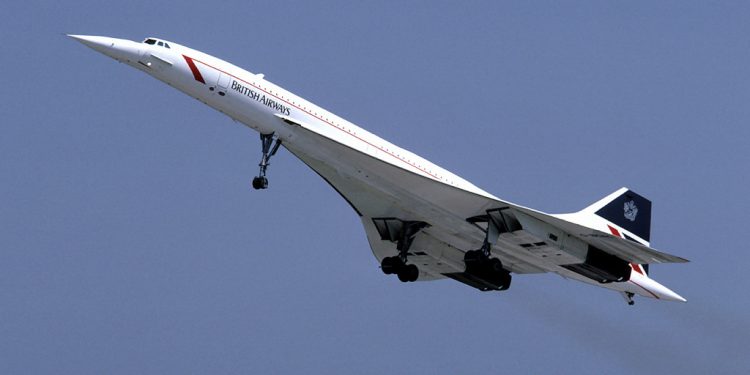Shortly after the end of World War II, in 1947, American pilot Chuck Yeager, aboard a Bell X-1 experimental aircraft, wrote one of the most important pages in the history of human flight.
On board that little orange winged bullet, named “Glamorous Glennis”, he broke the wall of sound for the first time. Soon, most of the fighter planes would be able to cross the magical threshold of Mach 1. It would be necessary to wait until 1969 to see a civil passenger plane fly over 1200 km/h.
We are talking about the Concorde, whose first prototype built in England, took flight on April 9, 1969 from the airport of Filton, headquarters of the British Aerospace Corporation, which had realized the plane together with its French counterpart Aérospatiale. On that sunny day in April 1969, the first shiny British Concorde, with no passenger seat on board but only 12 tons of equipment and machinery for the flight tests, began the high-speed taxiing tests.
Maximum throttle, afterburning active. At that moment Commander Brian Trubshaw decided to have the new plane detached from the Filton airstrip. After 22 minutes of flying in an extended trolley, Trubshaw, assisted by John Cochrane, landed on the runway of the Royal Air Force’s Fairford Airport, about 60 km from Filton. A momentous event, which in the years to come will bring thousands of passengers to cross the Atlantic Ocean in about three and a half hours at a cruising speed of 2200 km/h.
But these performances had a price, even very high. The maintenance of the aircraft lasted between 18 and 20 hours per hour of flight, compared with an average of two hours for other commercial aircraft, while its operating cost per hour of flight was 175,000 francs. If at the time of its birth, towards the end of the 1960s, there was no problem at all with the astronomical consumption of its four Rolls Royce Olympus with almost 18 tons of thrust each, with the serious oil crises of 1973 and 1979 this problem returned to be examined.
Seventeen litres of kerosene per passenger, per 100 km of flight. The cost of the ticket was on average three times higher than those of first class on normal planes. All of them relegated this technical prodigy more and more to a role as an aircraft for the exclusive use of VIPs. After the only incident of his long career, on July 25, 2000 when they were killed 113 people due to the crash immediately after takeoff from Paris Charles De Gaulle, the Concorde resumed service in November of 2001, staying there until the end of 2003, when Both British Airways and Air France decided to withdraw it because of the high operating costs and the decrease of passengers due to the attacks of 11 September 2001.
The final takeoff of a Concorde was from New York ‘s JFK Airport on October 24, 2003, to London, where I landed at Heathrow airport a few hours later. Some curiosity: The cruising speed was enough to cause a temporary reduction in the weight of the people aboard about 1, an effect caused by the centrifugal force. On flights to the west, then from Paris to New York, the speed was higher than that of Earth’s rotation .
So the time of arrival was before the local time of the place of departure and on some flights could happen to take off at sunset from London and land in the United States in broad daylight. An idea exploited in the advertising campaigns of British Airways, which used to disfind it “toarrive before leaving“.
